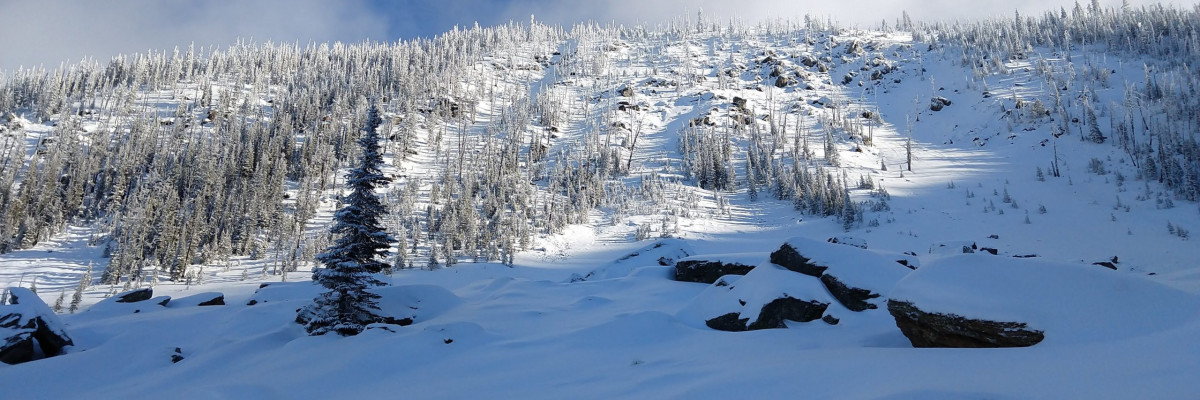The avalanche danger for the west central Montana backcountry is moderate. However, as the forecast snow arrives, the hazard will rise quickly. It is currently possible to trigger avalanches in terrain steeper than 35º. With the addition of new snow, it will be likely to trigger avalanches in 30º terrain. Watch for updated ratings as the storm progresses.
Good morning, this is Jeff Carty with the West Central Montana Avalanche Center’s avalanche advisory for December 31, 2019. This danger rating does not apply to operating ski areas, expires at midnight tonight, and is the sole responsibility of the U.S. Forest Service.
Weather and Snowpack
Snow is on the way. Starting Monday night and intensifying throughout Tuesday, 2+ feet of dense snow is forecast to fall by Wednesday night. Some areas will receive freezing rain or rain to up to 6000 feet. The Bitterroot and Swan will receive the most snow. Strong westerly and southwesterly winds will accompany the storm, increasing the load on leeward slopes.
After a snowy Sunday that deposited 1-4 inches of snow to the area, we had clear skies and cold temps Sunday night. As a result, we have extensive surface hoar on all aspects in the forecast area. Compounding this is a crust under the new snow that sits on near-surface facets. What this means is that there are multiple low strength, low friction sliding surfaces for the new snow to land on.
The snowpack varies widely throughout the forecast area, from very shallow in the southern Bitterroot to near seasonal norms in the Swan. Depths vary widely from bowl to bowl and aspect to aspect. Today in the Rattlesnake, the size of the depth hoar on north aspects, under a 51-inch snowpack, was alarming, while some south aspects between 6000-7000 feet had as little a 1 foot of snow. All of it, regardless of depth, contains a combination of facets and crusts.
Despite the poor structure, we have not seen widespread avalanches, yet. As it gets loaded with new snow likelihood of avalanches will increase. The incoming snow will consolidate into a slab quickly due to its density. Dense and wet snow could quickly overload buried weak layers.
Storm slabs that slide on the surface hoar/new snow/crust/facet combo may step down to weak layers deep in the snowpack and trigger much larger slides.
Without any new snow, the possibility still exists to trigger avalanches. Upper elevation and wind-loaded areas contain deeper, denser snowpacks that could produce large hard slab avalanches. The weak structure cannot be trusted. Avoid steep slopes and obvious avalanche paths. Be aware of potential trigger points such as rock bands and shallow areas. Early season conditions increase the likelihood of trauma if caught in a slide.
Currently, our primary concern is persistent slab avalanches. As the storm develops, it will shift to storm slab avalanches.
If you make it out touring, please, share what you find on our public observations page.
Ski and ride safe.
























